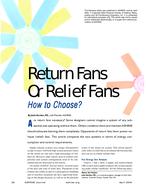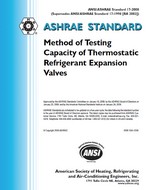Much has been written on the subject of subway environmental control in the past several years.At the First International Symposium on the Aerodynanics and Ventilation of Vehicle Tunnels held in Canterbury, England in 1973, a paper was presented which addressed a research project being conducted in the United Sttes at that time (Reference 1). This project, the Subway Environmental Research Project (SERP), studied the unsteady aerodynamic and thermodynamic phenomena associated with underground rapid transit systans. The development of a handbook for use by subway system planners, designers, operators, and equipment manufacturers was the major objective of this project. Recently, the Second Edition of the Subway Environmental Design Handbook, Volume I, Principles and Applications, was published and is available from NTIS (Reference 2). Reference 3 outlines the many quantitative evaluations which had been undertaken for the MARTA system during the preliminary design phase of the project.
Additional studies are continuing in the constant search for the most cost-effective designs, consistent with the accelerated development of the “state-of-the-art”, and as solutions to problems which are evolving durinq the preparation of final working drawings. The authors intend to describe herein some of the adjustments made to the preliminary conceptual designs as a result of these studies, along with the reasoning behind these revisions, as they relate to overall design of a total subway system.
The objectives to be sought in controlling the environment in subways are: first, to provide a suitable environment for patrons and operating and maintenance personnel; second, to provide for the removal of a sufficient amount of heat generated as a result of normal system operation in order that the life expectancy and operational reliability of the equipment, both on board the transit vehicle and at wayside, will not be diminished; third, to provide a means for the effective control of haze, odors and condensation; and finally, to provide a ventilating system which has flexibility and dependabiiity designed into its variable modes of operation to assure the effective purging of smoke and the control of temperatures during a fire which may occur anywhere within the subway system and thereby assist evacuees from a train which may be stalled between stations.
In order to conduct a thorough evaluation, the entire system, including its physical, geometric, operational and physiological parameters are examined. Analyses of the phenomena present within a rapid transit system, including the dynamic effect of trains moving in two directions, entering and leaving stations and the ensuing creation of variable air and heat flows is extremely intricate. Complete analyses of these dynamic phenomena were not feasible until the use of a computer program became available, to permit comprehensive evaluations of their effects within the subway system as the system design parameters change. Such a mathematical model, the Subway Environmental Simulation (SES) program was developed as part of the SERP project and has been applied to the MARTA project since its inception.
Product Details
- Published:
- 1977
- Number of Pages:
- 18
- File Size:
- 1 file , 1.2 MB
- Product Code(s):
- D-CH-77-01-3
- Note:
- This product is unavailable in Russia, Belarus


